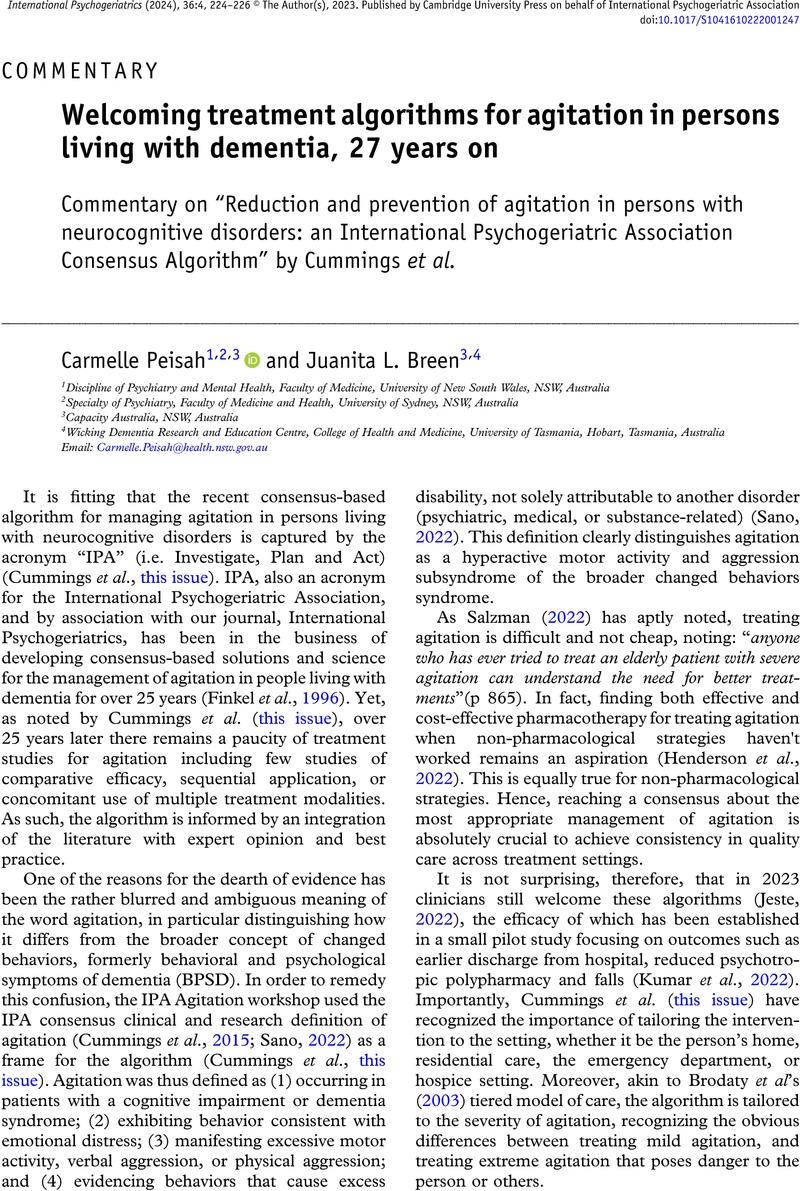No CrossRef data available.
Commentary on “Reduction and prevention of agitation in persons with neurocognitive disorders: an International Psychogeriatric Association Consensus Algorithm” by Cummings et al.
Published online by Cambridge University Press: 06 January 2023
